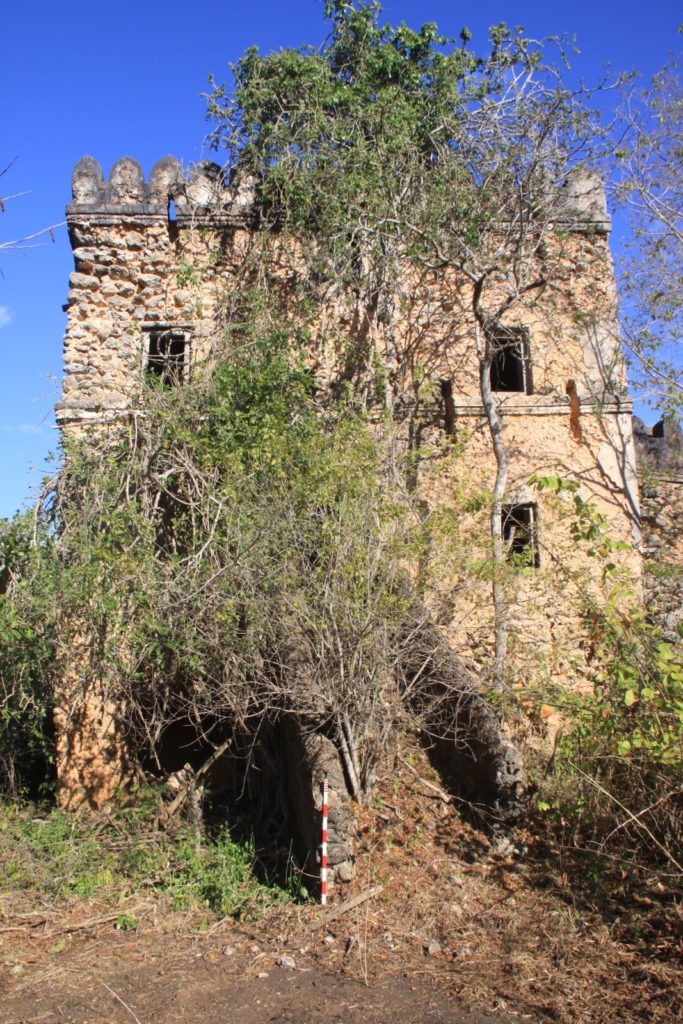This work was summarised for my by Jamie Locke-Jones @ the Research Impact Office, University of St Andrews
Those who try to understand the past rarely have the luxury of complete records that detail the lives of our ancestors. Instead, history is often reconstructed through the fragments of evidence that have survived the ravages of time. Today, around the world, this tangible heritage, which includes buildings, monuments, and objects, is crumbling to ruin due to natural disasters and climate change. In 2018, following the bombing of Palmyra by the terrorist organisation Islamic State, Professor Richard Bates from the School of Earth & Environmental Sciences worked with colleagues at Bradford University and Durham University to initiate a citizen-science project to crowdsource images of the lost sites to document and digitally recreate them. The project grew to consider other threatened and damaged archaeological sites, from those impacted by earthquakes in Nepal to sites closer to home such as Yorkshire’s Fountain Abbey, which was suffering from the impacts of climate change.
Reconstructing Heritage
Their website, Curious Travellers, operates as a piece of crowdsourced infrastructure, receiving photographs and videos donated by the public while also scouring the internet for additional fragments of information. The Curious Travellers team then combines these various data sources to create 3D representations of monuments and ancient sites that can be accessed online. One example is the Temple of Bel, Palmyra, Syria, which was dedicated almost 2,000 years ago in AD 32. Its ruins were thought to be the best-preserved in the whole of Palmyra, an ancient city dating back to the Neolithic period, before they were mostly destroyed by terrorists in 2015. The digitally reconstructed version, which can be seen below, has been painstakingly rebuilt from over 700 images found online and donated by members of the public. In this way, the monument can be seen authentically, without artistic license or academic guesswork. While still incomplete, the Curious Travellers reconstruction gives would-be visitors permanent way to see the Temple in its most complete and authentic possible state.
Building upon this work, the Curious Travellers team has moved on to acquiring data for other at-risk heritage sites such as Kilwa Kisiwani, a World Heritage Site in Tanzania. Here, working together with colleagues from the University of Dar es Salaam and the Tanzanian Department of Antiquities, the team has used ground-based and drone-based methods to document what remains to be seen at the site. Rising sea levels have flooded and eroded parts of the monument, and so work has also focused on exploring and documenting what can be found below the water. The resulting data has been used by the Government of Tanzania as part of a new Digital Heritage Database, created by the team specifically for the long-term management of their national heritage. Together with its Malawi counterpart, the Digital Heritage Databases are the first of their kind in the world, recording over 300 sites not previously documented in one place such as the World Heritage Sites Kilwa Kisiwan in Tanzania and the Chongoni Rock-Art Area in Malawi.
Bates’ research initially focused on using geophysical sensing techniques to record and then reconstruct tangible heritage. This included land-based, airborne and marine-based systems, and development of these techniques allowed for their use at a range of scales, from recording individual buildings to whole landscapes. However, people’s lives extend beyond their tangible possessions, and our understanding of heritage has expanded over time to include the intangible culture that often provide meaning to what we can physically touch and see. With their models crowdsourced from photos taken by their namesake, Curious Travellers demonstrates how, without cultural meaning, even the most imposing temple can fade from memory. Intangible heritage is now being actively recorded by the team, with stories, songs, cultural practices and ways of life all finding invaluable preservation in the Digital Heritage Database.
The impact of heritage protection goes beyond an enhancement of our archaeological knowledge. By recreating cultural monuments that were destroyed due to conflict or other factors, Bates and the Curious Travellers team are rebuilding a sense of heritage within communities around the world. Cultural sites are directly linked to cultural identity and familiarity; to preserve these sites, even digitally, is to embrace their community’s history and celebrate the culture of societies that might otherwise be forgotten.


No comments:
Post a Comment